Posted on November 6, 2020
Unfortunately, many people think that orthodontic headgear is outdated and don’t know why it is still in use.
The truth is, orthodontic headgear can be an important part of your overall treatment plan. It’s used to correct everything from misaligned bite patterns to an asymmetrical facial structure. Headgear is usually recommended for children, as their bones are still growing and they might need additional correction.
Learn more about how orthodontic headgear works from our experienced orthodontist here.
How Can Headgear Help You Get a Better Smile?
Headgear primarily influences jaw growth, which helps to properly align your teeth. Even if you already have braces, you may benefit from orthodontic headgear — it could help you achieve your dream smile sooner.
There are three main types of headgear that work to give patients a better smile by applying force in a certain direction.
Three Main Types of Headgear:
High Pull Headgear
High pull headgear attaches to the top bracket of the braces with a metal wire. It pulls up and back to correct overbites and overjets.
The high pull headgear gets its name from the positioning of the supporting straps which sit on the crown of the head.
Cervical Pull Headgear
Cervical pull headgear attaches to the braces via rubber bands. It pulls teeth straight back with an attachment behind the neck.
The most common use for cervical headgear is to correct overbites and overjets.
Reverse Pull Headgear
The reverse pull headgear is used to fix underbites. It does so by attaching to the braces of the top teeth and pulling forward. This headgear requires pads on the chin and forehead that act as leverage points to pull the teeth to the front.
How Can Headgear Help Improve Facial Structure?
Headgear is commonly used with adolescent orthodontic care, as their facial structure is still developing and can be improved dramatically. This change in facial structure is possible because headgear helps to train the jaw to grow a certain way, similar to a rapid palatal expander.
Plus, taking care of bite pattern issues early helps children avoid more serious issues once they get older. If these orthodontic problems aren’t corrected at a young age, they might end up with TMJ disorders, sleep apnea, or need jaw surgery.
Properly aligning jaws with headgear can also dramatically improve facial symmetry — instead of your child’s jaw growing out of alignment, headgear helps it to grow symmetrically.
How to Tell if You Need Headgear
Just because you need braces doesn’t mean you’ll also need headgear. Of course, this decision is ultimately up to your orthodontist. However, there are some common issues that require headgear to fix.
Headgear can correct many common orthodontic issues. This appliance is most often used to correct bite patterns that may be too misaligned for an Herbst® oral appliance, traditional braces, or Invisalign®.
You may need headgear if you have:
- Misaligned Teeth
- Misaligned Jaw
- Overcrowded Teeth
Can Adults Wear Headgear?
Yes, but not for the same reasons as kids.
Orthodontic headgear is typically not very effective on adults. Their mouths are fully developed and not as malleable as they were during childhood and adolescence. For this reason, when headgear is used for adult orthodontics, it is to correct teeth spacing after one or more teeth get extracted.
Does Headgear Require Braces?
Most headgear requires braces, but you do not always have to have braces to benefit from orthodontic headgear.
Sometimes a version of high pull headgear is used before braces are applied. This specific headgear uses a chinstrap to pull the lower jaw back, similar to an old-school football chinstrap. It’s usually used to correct an underbite.
Orthodontic Headgear in Parker & Castle Rock, CO
Not everyone will need to wear orthodontic headgear with their braces, but the 20 Mile Orthodontic teams in Parker and Castle Rock, CO are here to make the process as smooth as possible if you do.
Schedule an appointment online or call us today to get started on your journey to a better smile!
Back To Posts